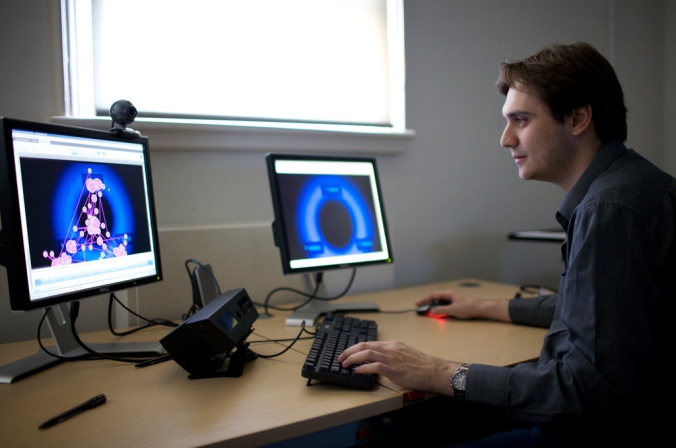
Brain by Allan Ajifo Licensed under CC BY 2.0
Put yourself in someone else’s shoes, do you know what they’ve been through; can you interpret one’s mental state from their body language and actions? Most humans are born with this understanding. This understanding is known as Theory of Mind or ToM for short. ToM is defined by wiki as “…the ability to attribute mental states—beliefs, intents, desires, pretending, knowledge, etc.—to oneself and others and to understand that others have beliefs, desires, intentions, and perspectives that are different from one’s own.” As mentioned before most humans are born with this ability however, that’s not always the case.
Individuals that cannot process Theory of Mind often suffer a cognitive disorder known as mind-blindness. This means an individual does not have the ability to truthfully understand the minds and notions of others. They often will not understand that everyone is unique with their own motives and initiatives. Mind-blindness is common with people who have autism, Asperger’s, schizophrenia, dementia, bipolar disorder and other mental disorders.

Eye-Tracking by City University Interaction Lab licensed under CC BY 2.0
There are many tests that are used to assess Theory of Mind. False belief testing is used to understand that “other people can have beliefs about the worlds that are different from their own” (ncbi). False belief allows for the understanding and predictability of others. Children typically develop most Theory of Mind skills by age 6. Today we use eye-tracking technology known as anticipatory looking for false belief testing.

Progress by Kevin Dooley is licensed under CC BY 2.0
For many years scientists have not been able to confirm that great apes have a complete understanding of Theory of Mind. This is because up until last October testing could only prove certain elements of Theory of Mind in apes. According to Scientific American, scientists were able to implement a new study that uses an infrared camera to monitor the eye movement of apes. During the experiment bonobos, chimpanzees and orangutans were brought into a room one at a time to watch a series of videos. Since apes are obsessed with social information like us humans, researchers created soap opera videos that displayed a series of events with apes as the main characters. All three species ended up passing this false belief test. The video below by New Scientists explains how the testing was conducted and monitored.
In my opinion, I believe that apes have the same ability to understand Theory of Mind like us humans do. Without language, it’s hard to accurately test the claim. However, with the increase in technology we have the potential to conduct new tests that can potentially uncover the truth. The experiment conducted last October is just the start to proving this claim. Do you think only humans have Theory of Mind?
Great job! I really like how you expanded beyond ToM in humans to also include other animals. I think that many animals have ToM (but maybe it needs to be tested in different ways depending on the animal being discussed). I think it’s really great to see the similarities we have with other animals. I really enjoyed this. Super informative, but also sweet and simple!
LikeLiked by 2 people
Thank you! I’m very interested to see how testing and results change in the future. Only time will tell!
LikeLiked by 2 people
I have been really enjoying all of the posts about theory of mind from our class! It is fascinating that 7 students chose to write about this- that is almost half of the class (of 15). If you haven’t already, perhaps read and comment on at least 1 or 2 of those. Nicholas- I love the connections that you have been making!
LikeLiked by 1 person